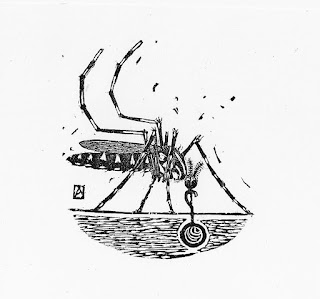 |
| My favorites of this mosaic are the maybe "Hosho Select?" top row L; and the bottom R, Shin Hosho(from Intaglio Printmakers). |
|
|
I have continued to try to locate a reliable source of sized, student-grade paper suitable for general work and student workshops.
My favorites for my own work, the reliable and consistent papers that always print beautifully for moku hanga are still
Echizen kozo and
Kizuki Hanga and
Nishinouchi (from McClains in the US) and
Mawata light and
Kihada Light and
Shin Hosho--all via Woodlike Matsumura in Japan or Intaglio Printmakers in the UK. But these papers run from $20-45$/sheet and I'm always looking for a paper I can get in Italy that is suitable for general work.
So I was very pleased when the Awagami paper factory started to begin to market their art and printmaking papers in the West. In a packet I received for my entry in a recent show, I received a selection of printmaking papers from Awagami. I pulled out the ones that looked like they'd be workable for moku hanga--either by feel or from their descriptions.
I also did a series of test prints, trying out this simple 4-block print to see how each would print and hold up to the several layers and colors.
The etagami drawing above was done by a 12-year old neighbor. I cut it as a 4-block simple woodblock print with 2 bokashi layers and no background.
For comparison: here is the same print on two western papers;
Zerkall Smooth and Annigoni
 |
| Zerkall smooth |
 |
| Annigoni a 100% cotton watercolor paper from Magnani | |
Based on these trials; I chose a couple papers for my recent workshop.
In addition to the double weight coated Bond paper that I use for proofing.
I cut up sheets of Zerkall Smooth, Magnani incisioni for European papers and based on the above tests the Hosho Select and Okawara Select from the Awagami line of editioning papers.
The latter papers are now available in Europe and I was pleased that these two midrange papers were both listed as suitable for water-based woodblocks on the Awagami site and confirmed in my trials.
Unfortunately, the paper that arrived was different in the hand than the papers I'd tested.
The Hosho select (top L above), while being listed as good for water-based woodblock prints is is listed in the Awagami catalog as
Unsized(that's not good) and a
laid paper....just like the paper that arrived....but UNLIKE the paper I tested which acted like my old favorite and heavily sized Shin Hosho and had NO laid lines......
And when I went to dampen the paper I had carefully pre-cut for my students.....It clearly sucked up the water like blotter paper and was too soft to be workable.
The Okawara Select was the same as in my trials, but at the larger size I gave my students it too was a little too soft, and since they didn't carve deeply or cleanly enough, most got spotting and ruined prints as the paper was a little too soft and floppy for beginners.
So, I'll have to look again at the others: the shiramine and bamboo papers didn't print badly and I'll try a few more before I decide what to try for my next class.
























































